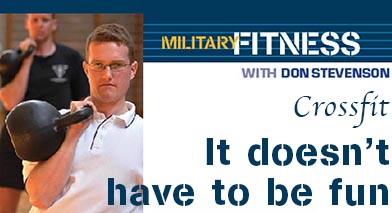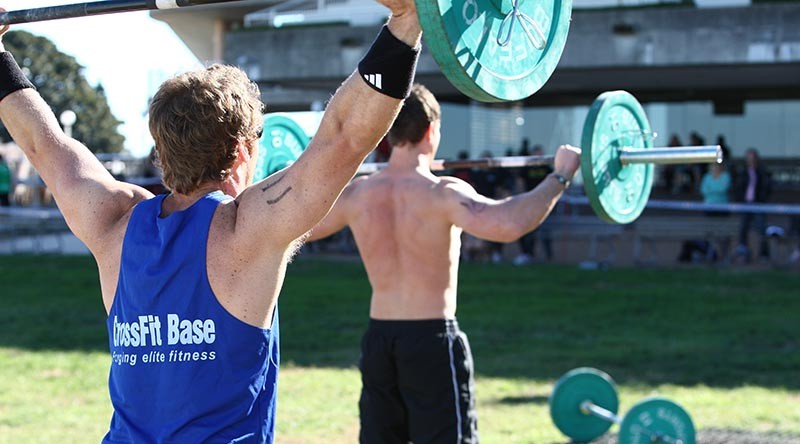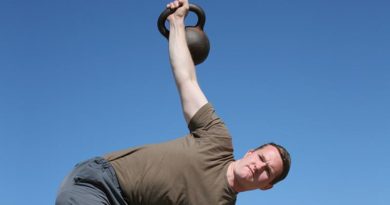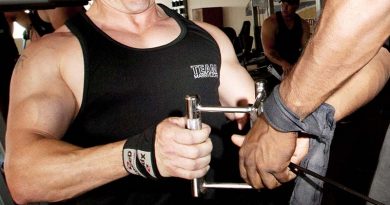Military Fitness – Part 5


If you’ve been following the past few articles in CONTACT, you’ll know I’m a big fan of kettlebell training for military personnel, particularly for anyone deployed away from a gym or base fitness centre. But, what should you be doing if you do have access to time, space and lots of equipment?
How about a system comprised of functional movements, an endless variety of new challenges and intense workouts that are guaranteed to improve all aspects of your fitness?
There is a system that fits all of these criteria and which is ideal for military personnel when they are in barracks and which can be adapted for use when deployed. This system even uses kettlebells!
The system is Crossfit.
It was developed by US coach Greg Glassman and tested and refined by hundreds of coaches and athletes all over the world.
I like Crossfit because it is tough and supremely effective, it develops all the fitness qualities a soldier, sailor or airman needs and it does it with great efficiency.
The full Crossfit program calls for a huge amount of equipment and is best suited to a barracks environment, although, as we’ll discuss later, you can adapt workouts to the resources available.
The fundamentals of Crossfit
Power – The main aim of a workout program should be to improve your power output.
This means being able to perform the maximum amount of physical work in the shortest possible time.
In Crossfit, many of the workouts are timed and the aim is to reduce your time as your fitness increases.
Functionality – No bicep curls or leg extensions here! All the exercises used in Crossfit are highly functional or have excellent carryover to real-world situations.
Crossfit employs exercises from a wide variety of sources including gymnastics, track and field, and weightlifting.
The focus is on movements such as the squat, deadlift, overhead press, chin ups, sit ups, running and rowing.
Variety – Combat is full of unexpected events. A Crossfit program is highly variable and presents new challenges every day. Run 5km today, max deadlifts tomorrow and work on handstands and calisthenics the day after!
Each day a fresh workout is published on the Crossfit website and all you have to do is step up to the challenge.
At first, it may seem that you never do enough of any one thing to improve on a Crossfit program. However, experience has shown that Crossfit does an excellent job of developing all-over fitness, and this has made it the program of choice for many police and military personnel the world over.
Benchmarking – Crossfit has a series of workouts called “The Girls”. These benchmark workouts occur with reasonable regularity in the Crossfit program and are used as a measure of progress.
The first kettlebell workout from CONTACT’s last issue (run, swing, chinups) is called “Helen” and, by comparing your times with other Crossfit adherents, you can get an idea of where you stand, fitness wise.
Adaptability – The Crossfit program, as prescribed on the website, often calls for some insanely high levels of fitness to complete or for equipment such as gymnastic rings that some gyms may not have.
In recognition of this, the Crossfit system allows for scaling and substitution to accommodate a wide variety of people.
For example, it is unreasonable to expect a 50kg female to use the same weights as a 100kg male, so, the workouts can be scaled with lighter weights.
For beginners, scaling is important because some of the workouts, particularly ‘the girls’, can deliver quite a beating to an unsuspecting exerciser.
In addition, the Crossfit system can be adapted to emphasise different aspects of fitness or compensate for a lack of available equipment.
If you don’t have access to a full gym, you can perform many of the Crossfit workouts with rocks, jerry cans or sand bags and, of course, there is always bodyweight work.
To get you started with Crossfit, try the eight-day mini cycle of workouts below.
On first inspection, this workout plan may seem very strange – just remember that there is no ‘arms’ day in combat and neither should there be in your program.
Try these workouts and you’ll very quickly discover the benefits of Crossfit.
Once you’ve completed that, have a look at www.crossfit.com and read the ‘FAQ’ and ‘start here’ links.
You’ll find a wealth of information on exercises, technique and fitness on the site, and the daily workouts are posted free.
Day 1:
“Cindy” – complete as many rounds as possible in 20 minutes of, five pull-ups, 10 pushups and
15 un-weighted squats.
Day 2:
Dead-lift five sets of five. Record the load you use.
Day 3:
Four rounds of 400m run + 50 un-weighted squats. Record your time.
Day 4:
Rest.
Day 5:
“Fran” – Three rounds, 21, 15 and 9 reps of 42kg front squat plus overhead press and pull-ups, trying for best time.
Day 6:
Row 2000m. Record your time.
Day 7:
“Angie” – 100 pull-ups, 100 push-ups, 100 sit-ups, 100 squats, trying for best time.
Day 8:
Rest.
.
.

.
.






